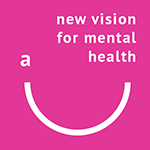
“Throughout modern history, societal progress has been measured in terms of GDP. … Hence, over time, GDP came to be seen as a surrogate for societal wellbeing – something it was never designed to be.”
![]() Our vision is of a society that recognises the wider factors that impact on mental and emotional health … and which therefore promotes wellbeing through its policies in education, the environment, economics and beyond, with a special focus on children and young people.
Our vision is of a society that recognises the wider factors that impact on mental and emotional health … and which therefore promotes wellbeing through its policies in education, the environment, economics and beyond, with a special focus on children and young people.
Choosing to develop a wellbeing society
As a result of work in the fields of psychology, anthropology, evolutionary biology and other human sciences, the current depth of understanding of the human condition is unprecedented. Because of this – and also because of technological progress – we are now in a position, more than ever before in human history, to choose the kind of society that we want to create.
In this venture we should begin at the beginning, namely with children and young people who can then later, as adults, carry an enhanced awareness forward into their various workplaces and cultural/social peer groups.The wider factors that impact on mental and emotional health
The emotional and psychological factors that make for an individual’s long-term wellbeing are well-known. They include a sense of valued purpose and usefulness – a life with real meaning. They include a sense of personal identity and ‘agency’ – the ability to pursue and realise goals that s/he values and has reason to value (i.e. to be more than just a ‘cog in the machine’). They include a feeling of connectedness to – and warm regard from – others. They include a human-scale environment, access to tranquil and beautiful places, and the feeling of living in a non-judgemental, ‘live and let live’ society.
The rise or fall in monthly growth figures, the change in stock market indices … these pieces of information are presented to us as key indicators of how well we are doing as a society, when in reality they often show the opposite. Road traffic accidents, for instance, cause a rise in GDP figures, whist the expansion of strip-mining may cause the stock market to rise. Many people, rather than feeling safe and secure in themselves and their lives, feel insecure, anxious and fearful. Encouraged by the advertising industry’s generation of false needs they often use consumerism as both a security blanket and a means of comforting themselves. In addition, status is currently measured primarily by wealth. A wellbeing society, however, will look for other ways to calm anxiety and other ways in which to define status. In the process it will encourage a greater diversity of lifestyles rather than force-fitting people into just a handful of lifestyle boxes. The fixation with GDP also twists our education system out of shape, largely reducing pupils to mere units of future economic potential. Hence, for example, school ‘league tables’, a misshapen national curriculum, a centralised control system and an exam-based regime that ramps up stress levels. Other factors that greatly impact on mental and emotional ill-health include:
 Focus on children and young people
Focus on children and young people
Three-quarters of the people who have mental health problems in adult life (excluding dementia) first experienced symptoms in childhood or adolescence – so this period in life is vital in preventative terms.
Most recent posts about a wellbeing society
